How does a Certified Public Accountant end up in jail, not once, but twice, for smuggling aliens into the USA? How does a tax accountant end up dabbling in passports and visas? When I first came across H. Ely Goldsmith’s name in the Swiss Archives files, I had no idea he would lead me down such a tortuous path. If there is one thing I have learned over the years of publishing this blog, it is to expect the unexpected. One would think that a German-Jewish-American “Immigration Consultant” would be able to save his own sister from the Nazi horrors. One would think wrong. Let me introduce you to H. Ely Goldsmith. This is the first post in a five-part series on Ely.
Introduction
The Swiss Archives are a rich resource, far richer than I could ever have imagined. It feels akin to standing before a massive banquet table, groaning with all sorts of interesting choices. So many files, so little time.
I began nibbling at the edges of the archives last year, focusing on a group of files that dealt with the Jewish passport business with which Josef Jakobs had been associated. In 1938/1939, the Nazis had rounded up the Berlin group involved with this black market activity and sent out a bulletin to other European governments. The Germans asked other countries to be on the look-out for travellers with fraudulent Finnish passports. One of the people that the Swiss authorities apprehended in 1939 was Dorothea Schachtel, a German Jewess who had attempted to escape Nazi Germany with a Finnish passport purchased from Aryan lawyer Jürgen Ziebell. The Swiss files contain Dorothea’s statement to the police as well as reports from the investigating officers.
During one statement to the Swiss Police, Dorothea admitted that:
“At Ziebell’s request, I was supposed to get in touch with an Eli Goldsmith in Cuba. Goldsmith was recently arrested in New York for forging passports. I can still provide the relevant newspaper article. I am now glad that I have had nothing to do with Goldsmith. Goldsmith is connected to Ziebell and should have taken care of my progress in Cuba.” (Dorothea Schachtel, Translated from her statement to the Swiss Police in Zurich in late May 1939).
Josef’s own statements about the black market passports had also mentioned that Ziebell had had a contact in Cuba who could “facilitate” Cuban passports. It seems very likely that H. Ely Goldsmith was this Cuban connection.
I dove deep into the Ancestry records and newspaper archives to dig up information on H. Ely Goldsmith. He was quite a character – a man with a respectable profession who ultimately ran afoul of the law and became a thrice-convicted felon.
Origins and Upbringing of H. Ely Goldsmith
Herman Elias (Ely) Goldschmidt came from rather humble beginnings. He was born 18 February, 1881, in the Thuringian town of Nordhausen. A quaint medieval centre nestled at the southern edge of the Harz Mountains, Nordhausen became a hub for engineering and munitions in the early 20th century. Decades later, it would go down in history for the infamous and hideous conditions at the Mittelbau-Dora (Nordhausen) concentration camp. At the time that Ely was born, however, Nordhausen was a rather rustic town teetering on the cusp of becoming an industrial centre.
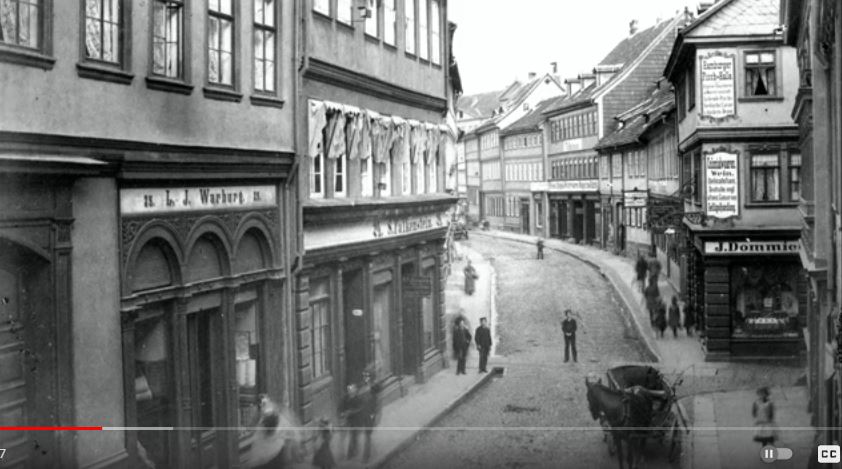
(From a YouTube video of old Nordhausen photographs)
Ely’s parents were Gustav Goldschmidt and Margarete (née) Marcus. Gustav had been born 5 September, 1861, in Drakenburg Kreis Nienburg, just northwest of Hannover. Margarete, had been born 1855 in Beeskow, just southeast of Berlin. How the couple met, and under what circumstances, is unknown. It seems likely that they married in the late 1870s or in 1880.
After Ely’s birth, the family moved to Berlin and settled in the Kreuzberg district, residing at Oranienstraße 100. Five years after Ely’s birth, on 5 May, 1886, Gustav and Margarete welcomed a daughter, Johanna, into their lives. There is no evidence that they had any other children, so this would have been a rather small and close-knit family.
Gustav was a fairly well-off businessman. After the move to Berlin, he founded Gustav Goldschmidt Junior, a manufacturing firm that produced girls’ clothing. In addition to selling locally, he also advertised wholesale and export services. It seems likely that Gustav had a tailoring background and it is possible that young Ely was recruited to help his father at the shop.
The family moved several times over the next few decades, from Oranienstraße 100 in Kreuzberg to Uhlandstrasse 176 and Nachodstrasse 15 in Wilmersdorf. The two later addresses were only a few blocks from Josef’s own family home. Our friend Ely would not make these moves with his family, nor would he continue to follow in his father’s tailoring footsteps. Ely chose a different path.
Ely graduated from the Realschule (high school for trades-oriented students) around 1898, at the age of 17. He may have attended post-secondary studies, or he may have picked up an apprenticeship for a trade. Given his future career choices, he may also have helped his father’s business by taking care of the accounting, or at least helping with it.
A few years later, at the age of 21, Ely joined the Germany Army for his stint of compulsory military service. Ely was a rather short fellow (5’2″) and with his reddish hair, must have cut a rather comical figure in the ranks of young recruits. It could not have been a pleasant experience. While most young men needed to complete three years of compulsory military service, some were rejected after their first assessment (due to criminal records or physical/mental infirmities). We don’t know the circumstances, but we do know that Ely did not complete his three years of military service. He had found a way out.
Establishing Roots: Ely Goldschmidt’s Early Years in America
On 20 December, 1902, Ely boarded the Graf Waldersee in Hamburg with a Second Class ticket clutched in his hand. He had set his sights on a new life in America. On 1 January, 1903, he walked down the gangway in New York, with a world of new opportunities lying before him. Ely did not waste a single moment and hit the ground running. On 9 January, 1903, less than two weeks after setting foot on US soil, Ely applied for naturalization as a US citizen before the Circuit Court of the United States. This was likely the first time he had appeared before a US court but it would definitely not be the last.
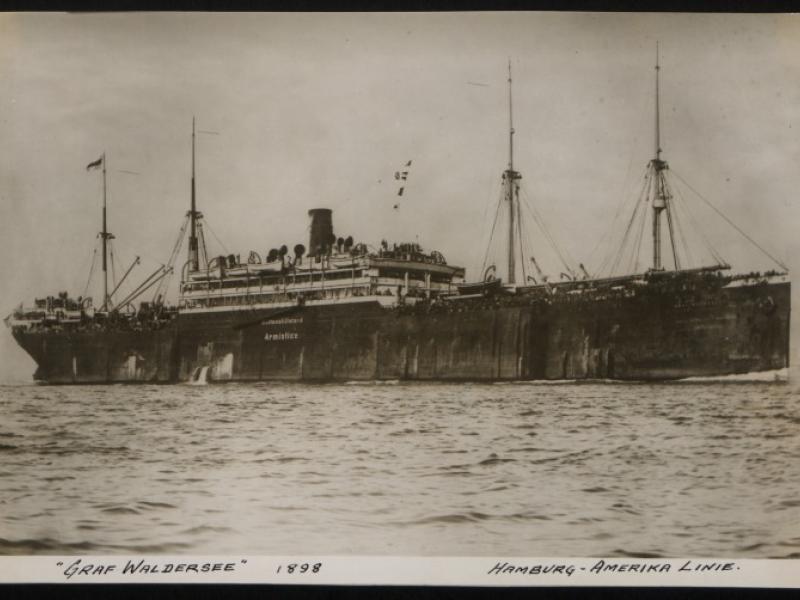
(From National Museums Liverpool site)
What drove Ely to emigrate is a complete mystery. The fact that he was travelling Second Class (and not Third) suggests he must have had some funds to support this trip. Perhaps his father had visions of a clothing empire expanding from Berlin into the USA. Perhaps this plan also gave Ely a way to avoid another two years of compulsory military service. Perhaps Ely’s father had contacts in the US who had offered to take Ely under their wings. Whatever the case, Ely took to life in America like a duck to water.
Ely first resided at 212 East 6th Street, smack dab between Noho and the East Village, in Manhattan. What he did during his first few years in the States is a mystery, but by 1907 he had established his own accounting firm, Accurate Audit Company. This would suggest that he had some background in accounting, either through schooling, or through experience as an apprentice or journeyman. Later that same year, on 17 December, 1907, he married Ida Grausmann in Manhattan.
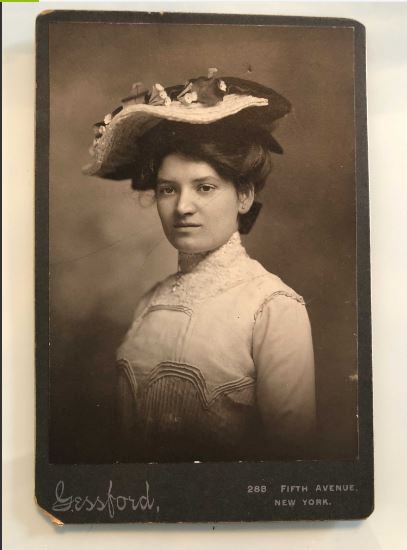
One gets a sense of her millinery skills from the hat she is wearing.
Photo from Ancestry
Ida was a German Jewess who had immigrated to the USA in 1899, at the age of 20. Unlike many other young immigrant women, Ida made the epic journey on her own. Her parents, Seligmann Grausmann and Amelia (née Silberman), remained in Wonfurt, Bavaria. Ida did not make the journey completely unsupported however. One of the witnesses to Ely and Ida’s wedding was her brother, Meier Grausmann. Meier, born in 1860, had immigrated to the USA in 1882 and was a tailor. Ida’s arrival in the US makes a bit more sense now, even more so when we learn that she worked as a milliner. Tailoring and textiles obviously ran in the family. The fact that the Grausmann siblings worked in the textile industry suggests that Ely also moved in those “tailoring” circles during his early years in America. Perhaps his toehold in the States was facilitated by his father’s business connections. Or perhaps Ely found work doing the books at some local textile businesses.
Just over a year after their wedding, Ely and Ida welcomed a daughter into their lives. Amy Margaret, born on 5 March, 1909, would be their only child. She would turn into a gifted singer and one can imagine Ely coming home from work and being serenaded by his little girl.
Professional Advancements
A year after Amy’s birth, on 11 April, 1910, Ely filed a petition with the Supreme Court in New York to be naturalized. At this point, the young family was living at 528 West 151st Street in the Hamilton Heights area of Upper Manhattan. According to the 1910 US census, Ely was a “Public Accountant”. His list of clients had expanded beyond the textile sector and now included, Barre-Bernard Company, a real estate company incorporated in 1910.
The following year, in 1911, Ely became a Certified Public Accountant in the State of New York. This was a relatively new term in the accounting field, designed to regulate accountants and accounting practices. In 1896, the State of New York had established that the Regents of the University of the State of New York would provide a Certificate of Public Accountancy to: “individuals over the age of 21, of good moral character, and who possessed, or intended to declare citizenship in the United States, with appropriate accounting education or experience, either through examination or previous experience”. The following year, in 1897, the New York State Society of Certified Public Accountants was incorporated, the first state society for CPAs in the United States. It was only in 1929 that the State of New York required that all new members had to have a college degree
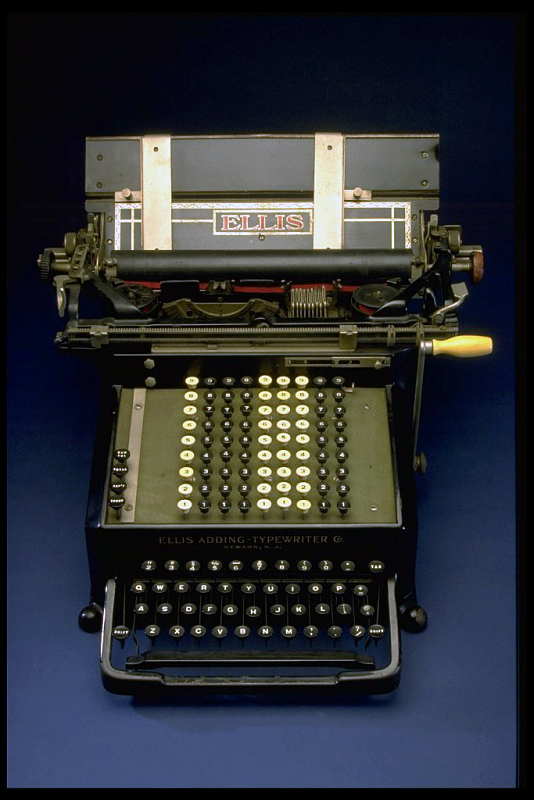
Ely may have used such cutting edge technology.
(From the National Museum of American History)
It seems likely that Ely became a CPA through experience alone, although questions about his education linger. A 1920 directory of New York accountants gives a brief biography of Ely. It is here that we learn he completed the RealSchule and served one year with the Imperial German Army.Later in life, Ely claimed to have four years of college education but there is no evidence to support this claim and the 1920 directory makes no mention of this. But, as we shall learn, Ely was not above embellishing the facts to suit his interests.
Nevertheless, achieving the Certified Public Accountant designation would have provided a huge boost to Ely’s career options. He was nothing if not a savvy businessman. From 1911 to 1914, Ely served as an Examiner of Municipal Accounts and as State Comptroller. He was also listed as an Expert for the State Department of Efficiency and Economy. During the same period, he also worked as an accountant for the New York Board of Education, although this was a job that would haunt him for several years! The sense, from all of this, is that Ely was a mover and a shaker. He had a lot of irons in the fire, and seized every opportunity that came his way, and even went out and actively chased down opportunities that were NOT necessarily coming his way!
Challenges and Opportunities
In 1915, Ely’s accounting firm maintained offices in the Centurian Building at 1182 Broadway just south of Midtown Manhattan. The Centurian building (1910) would have provided a central location from which Ely could serve his accounting clients. The following year Ely had moved his business across the street to 1265 Broadway. The Browning, King & Co. building (1910) housed a men’s furnishings retailer, the building’s namesake, on the lower floors. The upper floors of the building provided offices to architects, lithographers, book publishers and our friend, Ely.
That same year, Ely began his life-long wrangle with the US legal system. On 2 October, 1915, The City Record, New York City’s journal included this notice under court decisions:
Peo. ex rel. Herman Goldschmidt vs. Bd. of Education–Entered order granting motion to vacate order for examination of Patrick Jones.
The term “Peo. ex rel.” is generally used in cases where an employee is taking their employer to court. In this instance, the order to examine Patrick Jones was vacated or nullified. The City Record carries additional notices that track Ely’s tussle with the Board of Education for the next five years. Finally, on 23 April, 1920, The City Record published this notice:
Herman E. Goldschmidt vs. P. Jones; Same vs. G.C. Brown; Same vs. A.E. Bracefield–Entered orders discontinuing actions without costs.
Did he win? Did he lose? We aren’t sure. Some future sources will tell us that he won. Others will tell us that he lost. It is confusing but that too is becoming something we can expect from Ely. He knows how to talk a good talk and obfuscate the facts. He might actually have made a “good” politician, or a lawyer.
The tussle with the Board of Education took place while the First World War was raging, and we could wonder about Ely’s military service. As a relatively recent German immigrant, one would think that he would have been exempted from military service. And yet, on 12 September, 1918, Ely was required to register for the US military draft. Leaving aside his ethnicity, Ely would never have been considered prime military material. He was 37 years old and, according to the draft form, short (5’2″) with a “stout” figure. He was living at 2 Pinehurst Avenue, a large apartment building in Hudson Heights and gave his occupation as Certified Public Accountant. Whatever might have been happening with the Board of Education, Ely was still a reputable accountant with a seemingly solid business.
As noted above, we get the sense from the wartime years that Ely was a mover and a shaker. After the war, we can see this trend continuing and escalating. Ely was always writing something, promoting something or advertising something. He published regular articles in the Exhibitor’s Trade Review, for example, particularly on income tax topics. A new Internal Revenue law had come into force in 1919, and Ely seemed determined to take advantage of it. Ely ran an ad in the Review stating that he would do tax returns for FREE if exhibitors displayed a slide advertising his services during their performance. He was quite the hustler and that could indicate success or desperation.
Several sources from 1918-1920 provide some key information on Ely and his company. From the 1918-1919 Polk’s Directory of Corporations, we learn that Ely was the President of Accurate Audit Co, 1265 Broadway. The company had $10,000 in capital (worth about $200,000 USD in 2024). The company had several other officers: A. Alvin Fleischer – Vice President; Martin Weintraub – Secretary; Barnet Resnick – Treasurer. The company directors were the same four men. Fleischer, as we see in the below ad from the New York Times was a former U.S. Deputy Collector of Internal Revenue. That would be a handy resource for an accounting company! Alas, by 1920, Fleischer seems to have left the firm.
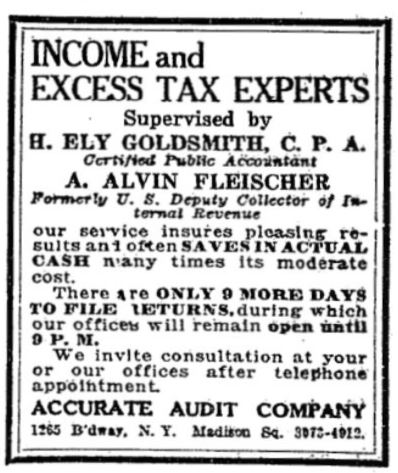
From the 1920 Accountant’s Directory (noted earlier), we learn Alex S. Jacobson was now Vice-President of Accurate Audit Company. All of the other directors remained the same. The brief bio of Ely in the directory also notes that he was the author of a 1911 publication called the Laymen’s Corporation Manual. He was also the editor of several Income Tax department publications. Despite his short stature, Ely was determined to cut a wide swath through life.
Shifting Focus: Assisting Aliens with Immigration & Tax Matters
Up until this point, Ely seems to have led a rather unremarkable and normal life, with the exception of the Board of Education case. Ely was a naturalized immigrant and citizen of the United States. He was married with a wife and beautiful daughter. He had his own (successful?) business and a reputable career as as Certified Public Accountant. What could possibly go wrong? As it turns out, a LOT. 1920 marks a change in Ely’s business direction, as he starts to see legal (and eventually, illegal) aliens as a source of business and income.
The First World War had severely restricted immigration into the United States, particularly from places like Germany and Austria. In the aftermath of the war, there were hundreds of thousands of displaced persons across Europe, particularly Eastern Europe, who saw the United States of America as a haven of freedom. Unfortunately, the cessation of war had not opened America’s immigration gates. And wherever there is huge demand, and reduced supply… there is a business opportunity for those smart enough to seize it. Ely saw the immigration bottleneck as an opportunity to “help” people.
We get the first inklings of this in a New York Times (NYT) article from 11 June, 1920. The previous day, a German newspaper had published an advertisement which stated that Ely could get permission from the State Department for German and Austrian residents to emigrate to the United States, for a fee of “just” $30-$35 (about $500 USD today). A sharp-eyed NYT journalist saw this ad in the German paper and trotted off to Ely’s offices to interview him. So many questions. Were his promises true? How could he get permission when so many could not? According to the journalist, Ely proudly claimed that most of the visa applications he had sent to Washington had indeed been accepted. The State Department, according to Ely, was relaxing its wartime ban on immigration and was allowing “meritorious” cases to enter. He may even have tapped the side of his nose, winked a bit, and suggested that it was all about who you knew.
Naturally, the NYT journalist also tracked down and interviewed State Department officials who, mouths agape, actually scoffed at Ely’s claims. They had never heard of him and he had absolutely no “special relations” with them. Major Moore, the visa officer at the State Department, said there were very limited circumstances in which Germans or Austrians could emigrate to the US. Each case was considered on its own merits and he warned Germans or Austrians seeking entry to the US to ignore such advertising.
Was Ely lying? Was he simply out to make a fast buck, preying on unsuspecting Europeans who had no idea how to navigate the complexities of the US immigration process? Immigration fraudsters still exist today, convincing unsuspecting immigrants that a few well-spent dollars will expedite their application. All lies. Was Ely doing something similar? Possibly. But Ely was not a one-trick pony and was playing every angle he could.
Publicity and Pushback
A couple of days later, on 13 June, 1920, the NYT ran another article about Ely with an eye-catching headline:
Charges $4,000,000 Tax Loss by Aliens
Accountant Here Declares Income Levies Have Been Collected Illegally
Cites Case of a Styrian
Collector Edwards Replies that Law Provides Ample Means for a Refund
According to Ely, who was quoted in the article, hundreds of resident aliens (originally from Germany and Austria) were being taxed inappropriately. With post-war travel opening up again, they naturally wanted to visit family and friends in Europe. As these resident aliens tried to board their ship, however, they needed to prove that their US taxes were paid and up-to-date. Even though they were resident aliens, they were being taxed as if they were non-resident aliens, at a much higher rate. If the resident alien traveler did not pay what was demanded, right there, at the dock, then a revenue inspector would prohibit them from boarding their ship. Ely had tried to bring the matter before the courts but had failed. Evidently, he decided that bringing the matter before the newspapers would bring some attention to the matter. He had even sent an article to German newspapers informing them of this grave injustice. The Collector of Internal Revenues, when asked for a statement by the NYT journalist, simply said that the aliens would get the money back as a tax refund, if warranted. Which makes sense. As long as those resident aliens came back, and filed their tax returns promptly (and accurately), whatever they had paid to the revenue inspector at the dock would naturally be applied to whatever tax was owing. And if they had paid too much, then they would most certainly get a refund.
This too seems to be a trademark of our friend Ely. He takes an issue, embellishes it a bit, and then gets it some media attention. I get the sense that he was always looking for a convenient soapbox from which he could elevate his position or amplify his voice. He obviously thought that newspaper ads and articles would get some action. Whether that action was movement on the part of the government, or just publicity for his business, is another question.
Family Ties: Returning to Berlin
On 24 July, 1920, Ely himself applied for a US passport, a document that would, in those days, also have included his wife and daughter. This should have been a fairly straightforward process, given that Ely was a naturalized citizen of the United States. It was not.
Ely paid the passport fee on 27 July and included a hand-written letter stating that he was an income tax expert and a Certified Public Accountant. He wanted to visit Britain, France, Holland and Belgium in order to obtain income tax work. According to Ely, thousands of tax returns (presumably US ones) were being filed from Europe. Yet no one was providing tax advice to these tax payers except the US consuls, who had neither the time nor a broad enough knowledge of tax matters. It sounded pretty legit, but Ely’s application was not accepted. At least not initially.
On 29 July, 1920, the Division of Passport Control sent a memo to a Department of State official named T.R. Coward stating: “This man’s name appears on the passport refusal cards of this Division with a reference to your office. Will you please let me know whether or not you are of the opinion that a passport should be withheld from him.” An attached note from the Visa Office of the Department of State simply noted “Refusal” and was dated 11 February, 1920.
On 2 August, 1920, T.R. Coward sent a memo to the Chief Special Agent asking: “Do you know anything re: Goldsmith? Pls make sure as I can find no record in V.H.” What exactly this “V-H” is, is unknown. Perhaps a type of Visa file? Perhaps a remnant of the First World War tagging those with connections to Imperial Germany? Perhaps a case of mistaken identity? Prior to 1920ish, Ely was known as Herman E. Goldschmidt, but after the Board of Education debacle, Ely pivoted to being known as H. Ely Goldsmith. Perhaps this name change was registered as “suspicious”. My sense of Ely is that he was trying to leave the Board of Education debacle behind him and create a fresh start. Whatever the reason, Ely would come under the microscope of the government before he received his passport.
A Bright, Clever Little Fellow
The Office of the Special Agent in Charge (Department of State) assigned a Special Agent to investigate Ely. This agent (name unknown) interviewed several people who knew Ely, and then interviewed Ely himself. Overall, he concluded that Ely “enjoys a good reputation as a citizen and professionally”.
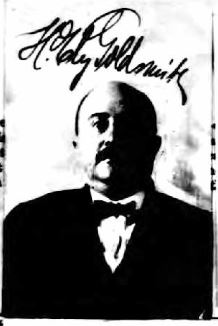
The agent naturally learned of Ely’s battle with the Board of Education and his investigation provides us with a bit more information. According to the report, Ely lost his position with the Board because he was too “critical of the Board’s methods of doing business and turned up unpleasant irregularities in certain transactions”. The Special Agent interviewed Leo M. Wallstein, Commissioner of Accounts for New York during Ely’s time with the Board. Although Wallstein wouldn’t go into any details about the incident, he did say that Ely’s dismissal was not a reflection of him personally. Wallstein regarded Ely as a “bright, clever little fellow”.
Altruistic Travel Plans
The Special Agent then interviewed Ely who “cheerfully and freely” shared details about his past activities and his future plans. Regarding the Board of Education issue, Ely said that he had taken them to court where he had won. The agent noted that this statement was supported by court records. Whether Ely showed the court records to the agent, or whether it was just a statement of fact is unclear. It would appear, however, that Ely won his tussle with the Board of Education! Although… later information calls this into question. Let’s just say that in July 1920, the back-and-forth court appeals and counter-appeals game was sitting in Ely’s favour.
As for his current and future plans, Ely told the agent that many of his clients were aliens. He saw a growing demand for his assistance in helping these clients comply with visa regulations. He did admit that he had previously aided some individuals in securing passports, but had given up this venture “almost entirely” after the government raised objections. This little tidbit is interesting as it would indicate that Ely’s career up until 1920 was not as squeaky clean as we had thought. Perhaps that was why there was a “refusal” on his visa and passport file. Ely was, however, a bit disingenuous with the Special Agent. He said that he had “almost entirely” stopped helping aliens secure passports. That would imply that he was still helping some people with passport issues. We will soon learn that providing aliens with passports and visas was something of a hobby horse for Ely, or the Goose that Laid the Golden Egg(s).
With an expression of utter innocence, Ely told the Special Agent that his intention in going Europe was to assist foreigners who owned large properties in the United States. These people were often not versed in the tax laws of the United States, and his services were in demand. He also planned to contact newspapers in Britain, France, Holland Belgium, and edit income tax articles for them. These articles would serve as passive advertising for him and connect him with prospective clients. Given the earlier NYT article (11 June, 1920) and his ads in German newspapers, this does not seem entirely accurate or truthful. But it is clear that Ely was indeed a “bright, clever, little fellow” and could spin a good story.
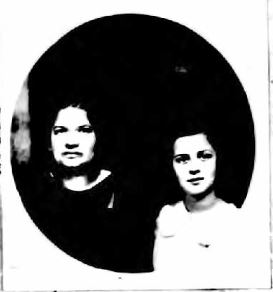
The Special Agent was “favorably impressed with [Ely] personally and as to honesty and reliability professionally”. The agent recommended Ely be given a passport. At the same time, he had reminded Ely that: “Any other purpose in making the trip than that stated is denied.” In other words, Ely could only go where he had said he wanted to go and do what he said he wanted to do. Germany was most definitely not on the approved list of places. The agent told Ely that if the passport was used for any other purpose, it would be confiscated. Based on the Special Agent’s report, Ely was approved for a passport on 6 August, 1920.
Visiting Germany
Later that month, on 28 August, Ely and his family departed New York aboard the SS Rotterdam. Ely was ecstatic. Finally… he could have a beer! A real, alcoholic beer! Prohibition had come into effect in the US earlier that same year and Ely would seem to have been a stereotypical German who enjoyed a decent brew! Ely wrote a short note to the editor of the NYT from aboard ship:
Opening of the Ship’s Bar
To the Editor of the New York Times:
If anybody has any doubts of the unpopularity of Prohibition let him take an ocean trip one of these fine Fall days, and attend the opening of the bar aboard after the statutory three-mile limit has been passed.
I watched the [..?…] aboard this good ship and I assure you that when the fourth sen mile was passed “no throat was found dry.”
The bartenders worked [..?…] the first day, and the waiters collapsed from overwork.
H. Ely Goldsmith
S.S. Rotterdam, Sept. 3, 1920.
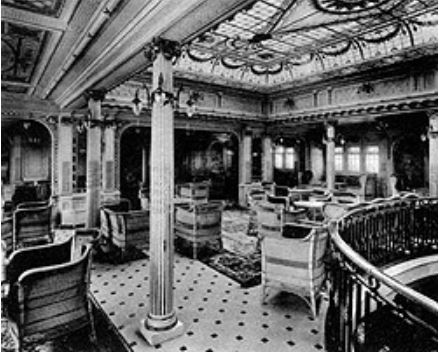
The SS Rotterdam docked in Rotterdam a few days later. According to the passenger manifest, however, Ely’s ultimate destination was not England, France, Belgium or Holland. It was Berlin. This is rather surprising, since Germany was NOT included on Ely’s list of approved places. But, as we are learning, Ely was a stubborn little fellow and chafed at legal statutes that restricted his enterprises or smacked of injustice. He was a staunch champion of the “little guy”… which often turned out to be him.
Given that Ely’s parents lived in Berlin, It seems likely that Ely had taken his wife and daughter to visit them. He hadn’t seen his parents and sister for almost 20 years and much had changed during that time. His little sister, Johanna, had grown up and married Ernest Löwe in 1909, although they seem to have been childless. Little Amy, at 11 years old and the only grandchild, would have been a delight to her Oma and Opa, perhaps singing for them in the evenings. Certainly Gustav would have been staunchly proud of his only son. The boy had turned out well – he had his own respectable accounting business, had married a good German-Jewish girl and produced a delightful granddaughter.
A few months later, on 10 November, 1920, Ely, Ida and Amy boarded the SS Manchuria in Hamburg and sailed back to New York. According to the ship’s manifest, they had been most recently in Berlin. One wonders… did Ely actually travel to the list of places on his passport application? Did he go to Britain, Belgium and France? Ely was most definitely not a person to follow the rules… perhaps his experience at the NYC Board of Education taught him that being a stickler for rules got you into more trouble than bending the rules. His relatively small legal battle with the Board of Education had given him a taste for victory. He had travelled to Germany and gotten away with it as there is no evidence that his passport was confiscated. The “little guy” could win and Ely decided to help other “little guys” (aliens) win against the state. For a price, of course. Some of his crusades, however, are a bit ludicrous. But that is for the next blog.
H.Ely Goldsmith Blog Series
Part 1 can be accessed here – 3 October, 2024
Part 2 can be accessed here – 10 October, 2024
Part 3 can be accessed here – 17 October, 2024 (link not live until then)
Part 4 can be accessed here – 24 October, 2024 (link not live until then)
Part 5 can be accessed here – 31 October, 2024 (link not live until then)
References
Ancestry – Births, Marriages, Deaths, Census, passenger lists, naturalization documents and other records.
Accountant’s Directory Who’s Who – 1920 – Accountants’ directory and who’s who (core.ac.uk)
NYC – The City Record Online – http://cityrecord.engineering.nyu.edu/
NYC – Vital Records Scanned – https://a860-historicalvitalrecords.nyc.gov/search
New York Times – archived newspaper articles
Header image by Chris Pastrick from Pixabay
